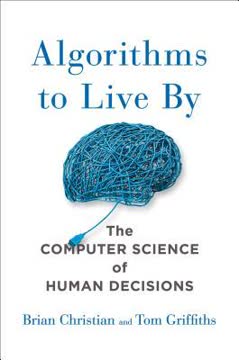Key Takeaways
1. Cost-benefit analysis revolutionized regulatory decision-making
The cost-benefit revolution defies the wishes of the left and the right.
Origins in Reagan administration. The cost-benefit revolution began with President Reagan's 1981 executive order requiring agencies to analyze costs and benefits of significant regulations. Subsequent presidents, both Republican and Democratic, have embraced and expanded this approach.
Technocratic approach to democracy. Cost-benefit analysis represents a technocratic conception of democracy, where expert analysis informs decisions rather than purely political considerations. This helps overcome cognitive biases and ensures regulations are based on evidence of their actual impacts.
Quieting political disagreements. By focusing on quantifiable impacts, cost-benefit analysis can sometimes resolve political disputes. For example, air pollution regulations with modest benefits and high costs become difficult for environmentalists to defend, while inexpensive rules preventing many deaths become hard for regulation skeptics to oppose.
2. Willingness to pay forms the basis for valuing benefits and costs
How much are people willing to pay to see their moral beliefs vindicated or to reduce the level of psychological harm they feel if those beliefs are not vindicated?
Valuing statistical lives. A key concept is the "value of a statistical life" (VSL), typically around $9 million in US regulatory analysis. This is based on studies of how much people are willing to pay to reduce small risks of death.
Challenges in valuation. While willingness to pay provides a basis for monetizing impacts, it faces several issues:
- Difficulty quantifying some benefits (e.g. dignity, equity)
- Potential disconnect between willingness to pay and actual welfare
- Distributional concerns when costs and benefits affect different groups
Breakeven analysis. When precise quantification is challenging, agencies can use "breakeven analysis" to determine how large benefits would need to be to justify costs.
3. Welfare, not just monetary values, should be the ultimate goal
The master concept is welfare, and cost-benefit analysis is the most administrable way to capture welfare.
Limitations of monetary values. While cost-benefit analysis typically relies on monetary values, these don't always accurately reflect welfare impacts. For instance, small costs spread across many people may have minimal welfare impact, while regulations preventing job losses could have major welfare benefits not captured by typical analysis.
Subjective well-being research. Emerging research on subjective well-being and happiness economics offers potential to more directly measure welfare impacts of policies. However, significant methodological challenges remain in applying this to regulatory analysis.
Future directions. The author argues for moving towards a more direct focus on welfare in regulatory analysis, while acknowledging the current practical advantages of monetary cost-benefit analysis as a proxy.
4. The knowledge problem challenges accurate cost-benefit analysis
Hayek was particularly concerned about socialist-style planning. He contended that even if socialist planners are well-motivated and if the public interest is their true concern, they will fail, because they will not know enough to succeed.
Dispersed information. Drawing on Friedrich Hayek's critique of central planning, the "knowledge problem" highlights how information relevant to regulatory decisions is widely dispersed throughout society and difficult for regulators to access.
Uncertainty and unintended consequences. Regulators face significant uncertainty in projecting costs and benefits, particularly for novel situations. Policies often have unintended consequences due to complex social interactions.
Strategies to address. Several approaches can help mitigate the knowledge problem:
- Rigorous public comment processes
- Retrospective analysis of existing regulations
- Increased use of experiments and randomized controlled trials
- "Measure and react" strategies leveraging real-time data
5. Moral commitments and dignity factor into regulatory decisions
When regulators conduct cost-benefit analysis, they should include valuations that reflect how much people are willing to pay to see their moral beliefs vindicated or to reduce the level of psychological harm they feel if those beliefs are not vindicated.
Moral motivations for regulation. Many regulations are motivated by moral concerns beyond direct health or economic impacts, such as protecting animal welfare or preventing use of "conflict minerals."
Challenges in quantification. While people's willingness to pay to uphold moral commitments can theoretically be included in cost-benefit analysis, this raises practical and philosophical challenges.
Limits on consideration. The author argues some moral commitments (e.g. racial discrimination) should be excluded from cost-benefit analysis if they conflict with constitutional or statutory requirements.
6. Privacy and national security require balancing multiple risks
Both Cheneyism and Snowdenism reflect enthusiasm for aggressive precautions against risks, though they display radically different perspectives on what we have to fear most.
Competing risk perspectives. In debates over surveillance and privacy, "Cheneyism" emphasizes grave risks from terrorism, while "Snowdenism" warns of existential threats to privacy and liberty from government overreach.
Precautionary thinking flaws. Both perspectives reflect forms of "precautionary thinking" that focus on worst-case scenarios for particular risks while neglecting countervailing risks and trade-offs.
Risk management approach. The author advocates a more comprehensive risk management approach considering:
- Full range of risks on both sides
- Probabilities and magnitudes of potential harms
- Costs and benefits of precautionary measures
- Institutional safeguards against abuse
7. Free speech protection goes beyond simple cost-benefit calculations
The clear and present danger test is not a test for all seasons. In imaginable times and places, it rests on doubtful assumptions.
Limitations of cost-benefit for speech. While cost-benefit analysis has revolutionized much of regulatory policy, the author argues it faces particular challenges when applied to speech regulation:
- Difficulty quantifying costs and benefits of speech
- Risk of institutional bias in assessing speech dangers
- Potential chilling effects of speech regulation
Clear and present danger test. The prevailing US legal standard requires speech to pose a "clear and present danger" of imminent lawless action to be restricted. This is more protective than a pure cost-benefit approach.
Contextual considerations. The author suggests the appropriate standard may vary based on context. While the "clear and present danger" test has worked well historically in the US, different approaches might be justified in more volatile situations or to address modern terrorist recruitment.
8. Retrospective analysis and experimentation improve regulation
To get the facts right, it is important to engage in far more evaluation and experimentation than we now do.
Importance of retrospective review. Analyzing the actual impacts of regulations after implementation is crucial to improve future rulemaking and correct mistaken predictions.
Randomized controlled trials. Increased use of randomized trials to test regulatory approaches can provide more reliable evidence of impacts than expert predictions alone.
"Measure and react" strategies. New technologies enable regulators to measure impacts in close to real-time and adjust policies accordingly, similar to how some businesses operate.
9. Public participation enhances regulatory decision-making
The goal is overwhelmingly substantive: to fill gaps in knowledge and to see what might have been overlooked.
Notice and comment process. The Administrative Procedure Act requires agencies to provide public notice of proposed rules and consider public comments. This helps address the knowledge problem by incorporating dispersed information.
Enhanced by technology. Online rulemaking platforms like Regulations.gov have made it easier for the public to access regulatory proposals and submit comments.
Quality over quantity. While mass comment campaigns have limited value, substantive comments from those with relevant expertise or experience can significantly improve regulations.
10. Institutions play a crucial role in implementing cost-benefit analysis
OIRA's ability to ensure careful attention to science and economics inevitably depends on personalities.
Office of Information and Regulatory Affairs (OIRA). This White House office plays a central role in reviewing agency regulatory analyses and ensuring adherence to cost-benefit principles.
Institutional design challenges. The author notes tensions between:
- Technical expertise vs. political responsiveness
- Centralized review vs. agency autonomy
- Consistency across government vs. flexibility for context
Potential reforms. The author suggests creating a more independent office for regulatory analysis, with authority to review both regulatory actions and inaction that may have large economic impacts.
Last updated:
Review Summary
The Cost-Benefit Revolution receives mixed reviews, with an average rating of 3.61/5. Positive reviews praise its exploration of regulatory cost-benefit analysis and evidence-based policy. Critics find it dry and lacking in real-world examples. Some readers appreciate Sunstein's enthusiasm for technocratic approaches, while others desire more insider perspectives. The book is seen as a primer on cost-benefit analysis in government decision-making, valuable for those interested in policy and regulation but potentially challenging for casual readers.
Similar Books










Download PDF
Download EPUB
.epub digital book format is ideal for reading ebooks on phones, tablets, and e-readers.












